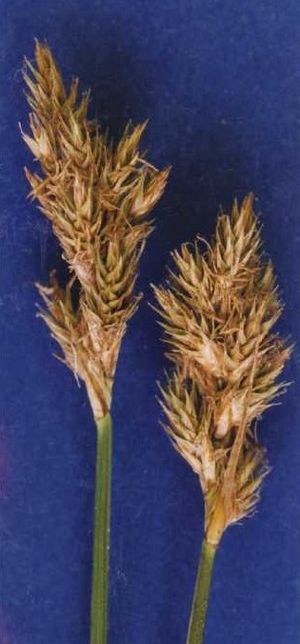Narrowfruit sedge facts for kids
Quick facts for kids Narrowfruit sedge |
|
|---|---|
 |
|
| Scientific classification | |
| Genus: |
Carex
|
| Species: |
specifica
|
Carex specifica, also known as narrowfruit sedge, is a type of grass-like plant called a sedge. It gets its common name from its very thin, pointed fruits. This plant is found in parts of western North America.
Contents
What is Narrowfruit Sedge?
Narrowfruit sedge is a plant that grows in dense groups, forming clumps of stems. These stems can reach a height of about 85 centimeters, which is almost a meter tall! It's a tough plant that can grow in different environments.
How Narrowfruit Sedge Looks
The plant's stems are topped with a special part called an inflorescence. This is where the flowers grow. For Carex specifica, the inflorescence is a tight bunch of flower spikes. It can be green or turn a golden color. This cluster can be up to 5 centimeters long.
After the flowers, the plant produces fruit. Each fruit is wrapped inside a protective cover called a perigynium. In narrowfruit sedge, this perigynium is very thin and pointed. It can be green or a light straw color.
Where Narrowfruit Sedge Grows
This sedge species is native to western North America. You can find it growing in several states in the United States, including California and Nevada. It also thrives in mountain ranges like the Cascade Range, the Klamath Mountains, and the Sierra Nevada. It prefers specific habitats within these regions.
The Life Cycle of Sedge Plants
Like many plants, Carex specifica goes through a life cycle that includes flowering and producing seeds. The flowers on the inflorescence are pollinated, which leads to the development of the fruits. These fruits contain the seeds, which can then spread to new areas and grow into new plants. This helps the species continue to thrive in its natural habitat.

